In an incident late last night, Alaska Airlines Flight 810, en route from Lihue to Seattle, was diverted to Honolulu after four flight attendants reported becoming ill due to an unknown odor on the aircraft. The 14-year old Boeing 737-800, which departed late from Kauai at 11:00 PM HST, landed in Honolulu at 12:37 AM HST. That was far earlier than expected compared to its scheduled arrival in Seattle.
What happened onboard AS 810?
Shortly after departure on this flight that Beat of Hawaii editors use, four female flight attendants, reported to be aged between 28 and 59, began experiencing symptoms of nausea and disturbed coordination. That lead the captain to make the decision to divert the flight and return to Hawaii. Honolulu Emergency Medical Services treated the FA’s upon landing, and all were transported to the hospital in stable condition. No passengers are said to have reported any similar symptoms or required medical attention.
With 119 passengers and six crew members on board, kudos to Alaska Airlines for acting rapidly to ensure the safety of both the plane’s crew and passengers. While no passengers were affected this time, the diversion highlights ongoing concerns we’ve previously mentioned about cabin air quality on Hawaii flights.
Alaska Airlines’ response and re-accommodations.
Alaska Airlines issued a statement indicating they were re-accommodating passengers on flights to Seattle today. The aircraft was ferried back to Seattle without any passengers for further inspection, in an attempt to determine the cause of the unknown odor.
While this incident appears isolated, we’ll await Alaska’s report identifying the source of the odor, to prevent further issues. The swift action underscores the importance of airline safety protocols and quick decision-making in ensuring the wellbeing of both crew and passengers. That is even more important during a trans-Pacific flight where there are no further diversion points once leaving Hawaii.
Cabin air quality a recurring concern that caused another Hawaii flight problem this summer.
This incident raises questions about in-flight air quality and its potential impact on crew members and passengers. It’s far from the first time issues with cabin air have caused flight diversions. Similar events involving air quality issues have been reported across various airlines in recent years, prompting calls for improved ventilation systems and better detection of harmful substances in the cabin.
Alaska Airlines experienced another air quality-related incident just three months ago in June 2024. Flight 828 from Honolulu to Anchorage was halted when two crew members fell ill due to a strange odor detected in the cabin. The crew members were unable to perform their duties, and as a result, the flight was canceled before departure. Passengers were also not affected in that instance.
Alaska Airlines has not yet provided details on what could have caused the odor on last night’s flight, but this case echoes past situations in which air contamination, often referred to as “fume events,” has led to illness in crew members. Airlines will need to continue exploring how to prevent such occurrences and ensure safer air conditions aboard aircraft.
Will this lead to improvements in aircraft air quality?
The recent incidents of flight attendants falling ill due to air quality issues, including the diversion of Alaska Airlines Flight 810 and the previous case in June, have spotlighted a growing concern in aviation. While airlines have protocols in place to manage in-flight safety, these recurring events are likely to prompt further scrutiny into air filtration and ventilation systems onboard. Pressure is mounting on the industry to address these issues. With the rising frequency of air quality-related diversions, airlines may need to act swiftly to ensure the well-being of both passengers and crew.
Get Breaking Hawaii Travel News

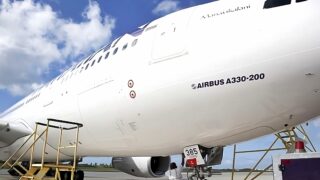

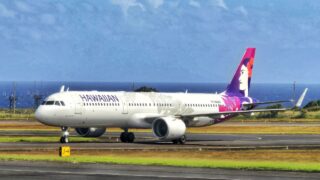
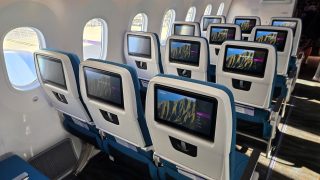
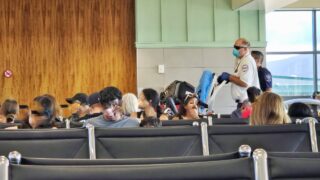
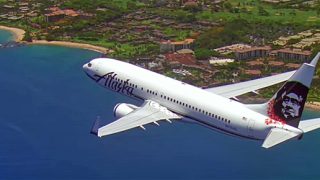
Maybe time to fly the same plane with a battery carbon monoxide detector on board. Engine exhaust leak if traveled into the cabin somehow would make lots of people dizzy, light headed and eventually vomit. Hard to smell but will present same issues. Airports always smell like diesel bus stations from exhaust fumes.
Time to break out a particle tester as used in high tech cleanrooms to isolate the location or source. I wonder if it is a perfume issue or the filters on the airline need changed. How often do airline restrooms get cleaned? What is the smell burning plastic, rotten smell, or some strange chemical or did someone just break wind?
Hi Guys – longtime reader, first time emailer. If you wish to research previous incidents re: toxic fumes in the Boeing cabins, here is a great link to start.
https://wgntv.com/news/wgn-investigates/wgn-investigates-the-boeing-papers-how-safe-is-the-air-up-there/
Hmmm … is this Déjà vu all over again?
ASA Flight Attendants have “reported becoming ill due to an unknown odor on the aircraft” for more that a couple of decades and counting.
I’m sorry … but as an airline employee with 25K+ flight hours – most of it in long-haul, Trans-Pacific flights – I’ve never had one crewmember – pilot or flight attendant – complain about “unknown odors on the aircraft” that would be a cause for concern or require the need for an early divert to a landing.
This seems to be something that’s become de rigueur and the remains largely in the province of ASA flight attendants, IMO …
So what does that tell you … ??